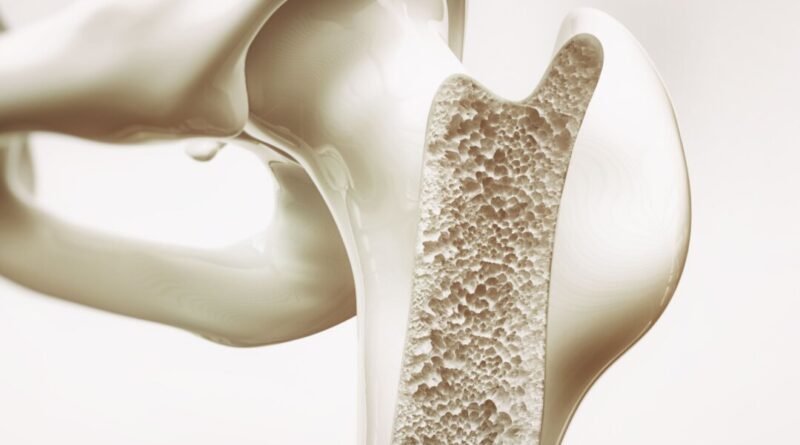Hope for Osteoporosis Treatment Unlocked Through Recent Hormone Discovery
CCN3, a potentially groundbreaking hormone, shows great potential in transforming bone health treatment and enhancing the quality of life for millions.
Scientists have uncovered a novel hormone, CCN3, that effectively strengthens bones. This breakthrough, made during research on bone density maintenance in breastfeeding women, has the potential to revolutionize the management of osteoporosis and bone fractures.
About the Study
Researchers from the University of California (UC) San Francisco (UCSF) and UC Davis collaborated to unravel a long-standing medical puzzle: how breastfeeding mothers maintain robust bones despite the calcium loss required for milk production.
During lactation, the high demand for calcium for milk production can result in significant bone loss. Normally, estrogen protects women by promoting bone formation to counteract bone loss. However, estrogen levels plummet during breastfeeding. Despite this decline, breastfeeding women rarely experience osteoporosis or bone fractures, indicating another factor at play in safeguarding their bones.
Nicknamed the “lactation-induced brain hormone,” CCN3 is present in the brains of lactating mice and plays a vital role in preserving bone strength during lactation.
“One of the remarkable aspects of these findings is that if we had not been focusing on female mice, which is unfortunately common in biomedical research, we might have completely missed this discovery,” expressed Holly Ingraham, senior author of the recent research and professor of cellular molecular pharmacology at UCSF, in a press release.
Research revealed that elevated levels of CCN3 in mice displayed significant enhancements in bone mass and strength, even in older mice and those lacking estrogen. Experiments showed that mice with higher CCN3 levels exhibited notably stronger bones, as the CCN3 hormone stimulated activity in skeletal stem cells. Without CCN3, these mice experienced rapid bone density loss, affecting their offspring as well.
Dr. Sundeep Khosla, a Mayo Clinic physician overseeing the Osteoporosis and Bone Biology Laboratory, emphasized the significance of CCN3, known as the “maternal brain hormone,” to The Epoch Times. “Whenever you uncover a completely new pathway to regulate bone from the brain, that’s scientifically fascinating.”
Impact on Osteoporosis
Osteoporosis, characterized by weakened bones and a heightened fracture risk, represents a significant global health concern. According to the U.S. Department of Health and Human Services, an estimated 10 million Americans have osteoporosis, with women constituting 80 percent of those affected. Additionally, the Centers for Disease Control and Prevention states that approximately 44 million people have low bone mass, increasing their vulnerability to osteoporosis.
Dr. Khosla highlighted CCN3’s promise in addressing osteoporosis, emphasizing its scientific potential and economic impact. While current medications are effective when used appropriately, concerns about side effects often lead to underutilization. Enhanced education for both medical professionals and patients is vital to optimize the use of these cost-effective treatments, he indicated.
“New medications that may stem from CCN3 could be especially beneficial for individuals with osteoporosis,” he mentioned. Depending on the drug’s cost, it could potentially reduce the substantial financial burden of osteoporosis.
Potential Benefits and Future Applications
Understanding CCN3’s role in bone health goes beyond lactation. This hormone could have significant implications for expediting fracture healing and treating osteoporosis.
In discussions with The Epoch Times, lead researcher Dr. Muriel Babey explained how scientists developed a hydrogel patch that gradually releases CCN3 at bone fracture sites, resulting in faster and stronger healing in elderly mice. The treated fractures healed more rapidly and were stronger compared to those without hormonal treatment.
“We have never achieved this level of mineralization and healing outcome with any other approach,” said Dr. Thomas Ambrosi, a study co-author from UC Davis, in the press release.
Although the current study focuses on mice, the human health implications are encouraging. The next steps involve clinical trials to evaluate CCN3’s efficacy in humans and further exploration of its potential applications in bone health treatments.
Dr. Khosla pointed out the limitations of current osteoporosis therapies. While drugs like bisphosphonates can prevent bone loss, the ability to reverse osteoporosis remains restricted.
“We require new strategies to rebuild bone,” Dr. Khosla stressed, noting that existing medications often lose efficacy over time. He expressed hope that CCN3 could provide more sustained and robust effects in stimulating bone formation, potentially in combination with other treatments.
Dr. Babey noted that bone loss affects not only post-menopausal women but also breast cancer survivors taking hormone blockers, younger elite female athletes, and elderly men, who exhibit a lower survival rate after hip fractures compared to women. A breakthrough in increasing bone mass in all these groups with CCN3 would be significant.
With clinical trials on the horizon, CCN3 shows promise in transforming bone health treatment and enhancing the quality of life for millions across the globe.






